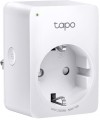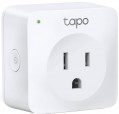Smart home system integration
Nowadays, you can find different smart home platforms, the most popular are Apple HomeKit and Google Home (see below). However, there are other options for proprietary systems - as a rule, they are sold by manufacturers for their smart home devices.
-
Apple HomeKit. Smart home technology developed by Apple and designed to be controlled from Apple devices (iPhone smartphones and iPad tablets, PCs and laptops on macOS, wrist gadgets on watchOS and smart video equipment on tvOS, as well as HomePod smart speakers). One of the most striking features of this technology is the ability to control components (including smart sockets) through the Siri voice assistant. Specific HomeKit functionality is constantly being expanded and improved; however, if you are a fan of Apple technology, when choosing smart sockets you should definitely pay attention to models that support this technology.
-
Google Home. Similar technology from Google. Compatible components (including smart plugs) can be controlled from any device with the Google Home app installed; Today such an application is available for both Android and iOS. In addition, there are specialized control devices - most notably the Google Nest line of smart speakers (which was originally called Google Home), equipped with a built-in Google Assistant.
Voice assistant
The type of voice assistant supported by the device.
By itself, the support of a
voice assistant makes it possible to control a smart socket / extension cord using voice commands. However, note that this is not about an assistant built into the socket itself, but about guaranteed compatibility with the gadget where the corresponding assistant is installed. Thus, to use this feature, you will need an additional device with a built-in voice assistant — a smartphone, tablet, smart speaker (Amazon Echo, Apple HomePod, Google Nest), etc.
The most popular voice assistants nowadays are
Amazon Alexa,
Apple Siri,
Google Assistant. A smart socket can be compatible with one of them, or with several at once; the specific functionality available from the voice assistant should be specified separately in each case. In addition, you should pay attention to the supported languages.
Note that the support of assistants is directly provided for in some smart home systems. For example, the Apple HomeKit specification initially includes the use of Siri, and Google Assistant is available in Google Home if an Android gadget is used for control (more on HomeKit and Google Home, see above).
Operating temperature
The operating temperature of the device is the range of ambient air temperatures at which the socket / extension cord is guaranteed to remain operational.
All smart sockets and extension cords easily tolerate “room” conditions with a temperature comfortable for a person. Therefore, if the device is bought for an ordinary residential or office space, you can ignore this indicator. But if the outlet / extension cord is to be used in a more extreme environment (for example, in an unheated garage), you should make sure that the selected model can normally endure the corresponding temperatures. This is especially true with regard to resistance to cold:
frost -resistant devices can be found on the market, but there are quite a few of them.

